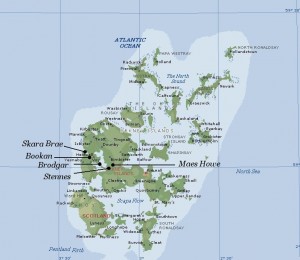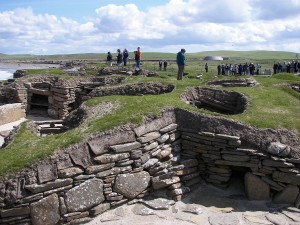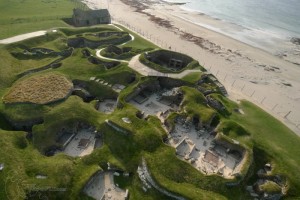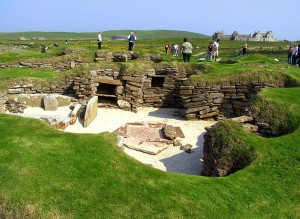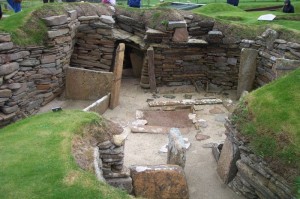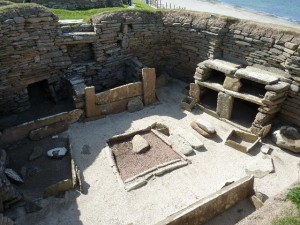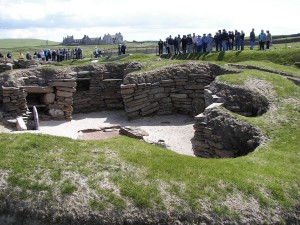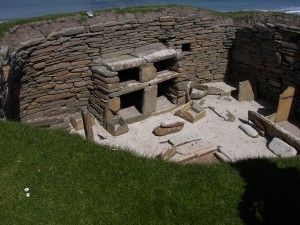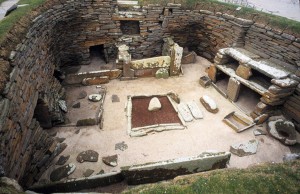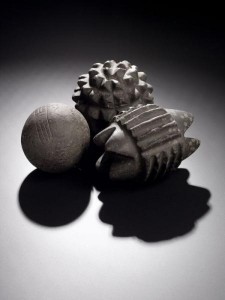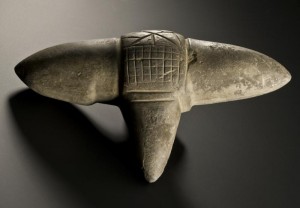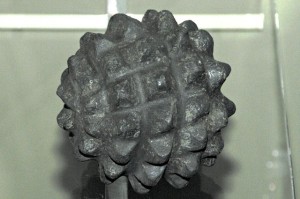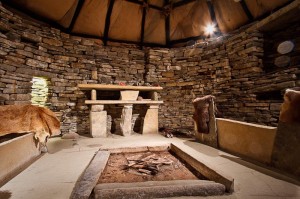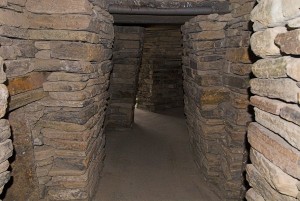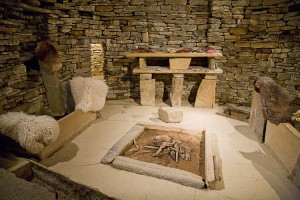Written by Soudip
October 20th 2014You Are Here
Home > Scotland > Skara Brae Historical Facts and PicturesSkara Brae Historical Facts and Pictures
Located near the beach of Bay of Skaill on the west coast of Mainland (the largest island of Orkney archipelago), Scara Brae is one of the finest embodiments of Neolithic settlements. Comprising eight clustered houses, the site was occupied approximately from 3180 BCE to 2500 BCE. It is considered as the most complete Neolithic village in Europe and has been designated as a UNESCO World Heritage Site in 1999.
Skara Brae Map
Structural descriptions of Skara Brae
The houses residing within the site are constructed by intimately fitting flat stone slabs and built into mounds of midden. Each house consisted of a single room of 40 square metered floor space. The fitted stone furniture in those houses comprised a dresser where valuable objects were stored and displayed.
Skara Brae Houses
Artifacts in Skara Brae
Various archaeological surveys have explored rich sets of artifacts within the site that include pottery, jewelry (necklace, beads, pins and pendants), hand tools and gaming dices. The richly-curved stone items are the most remarkable of all artifacts, which were perhaps used in religious ceremonies. The majority of the surviving artifacts are put on display in the visitor center that is situated near to the site.
The discovery of the site was caused by a storm in the winter of 1850. The high tides and fast winds stripped the soils and grass from a large irregular mound, which was known as “Skerrabra” during that time. The storm exposed an outline of village, containing a number of small stone buildings without roofs. The local laird, William Watt of Skaill, excavated the site soon after the incident and discovered four buildings. The excavation works were halted in 1868 and remained so till 1913. In 1924, another storm caused damage on some of the earlier excavated structures and after that further investigation responsibilities were handed over to Professor Vere Gordon Childe of University of Edinburgh, who visited the site in 1927.
Inside of Skara Brae
Category
ScotlandWritten by Soudip
October 20th 2014


